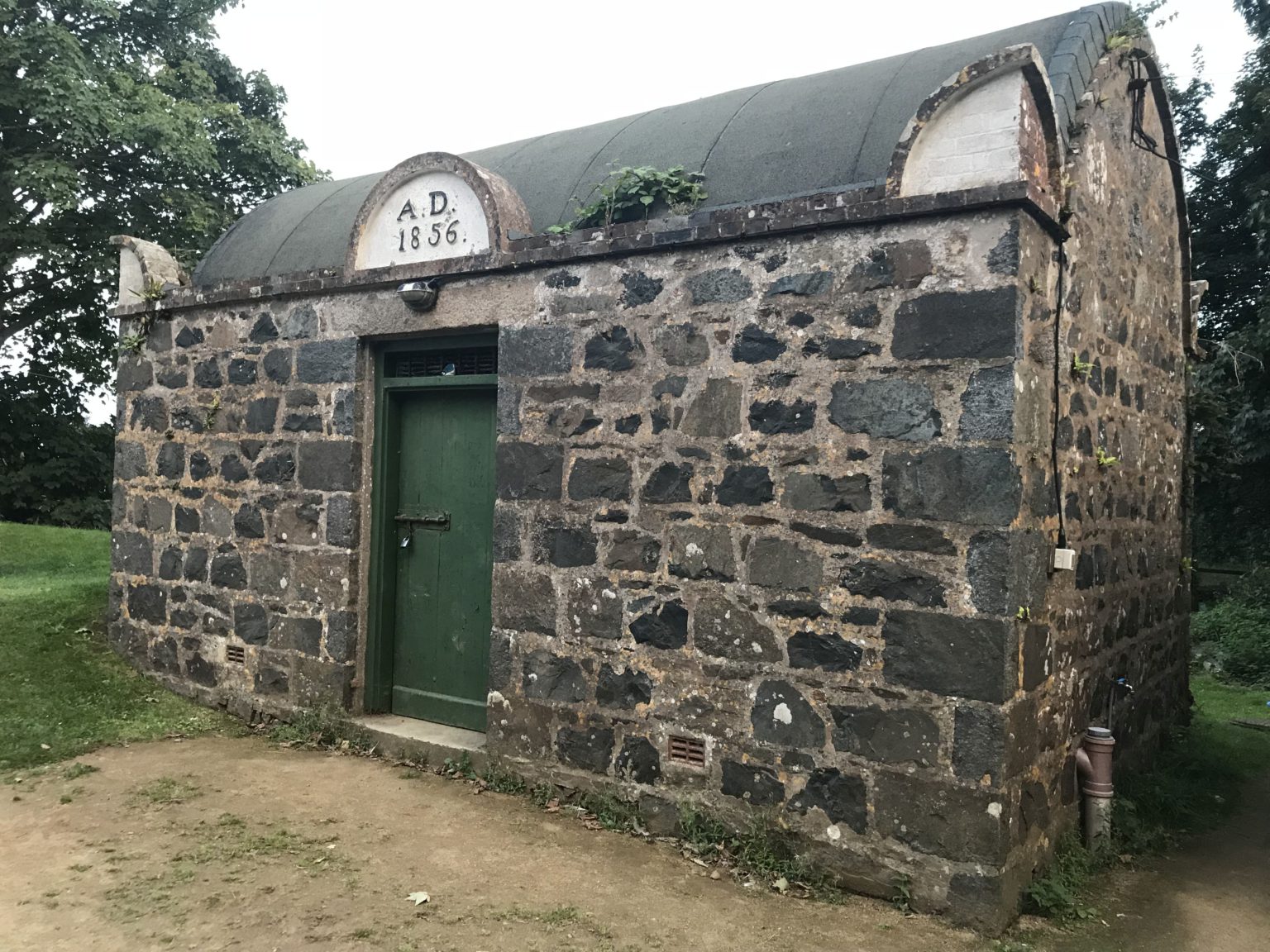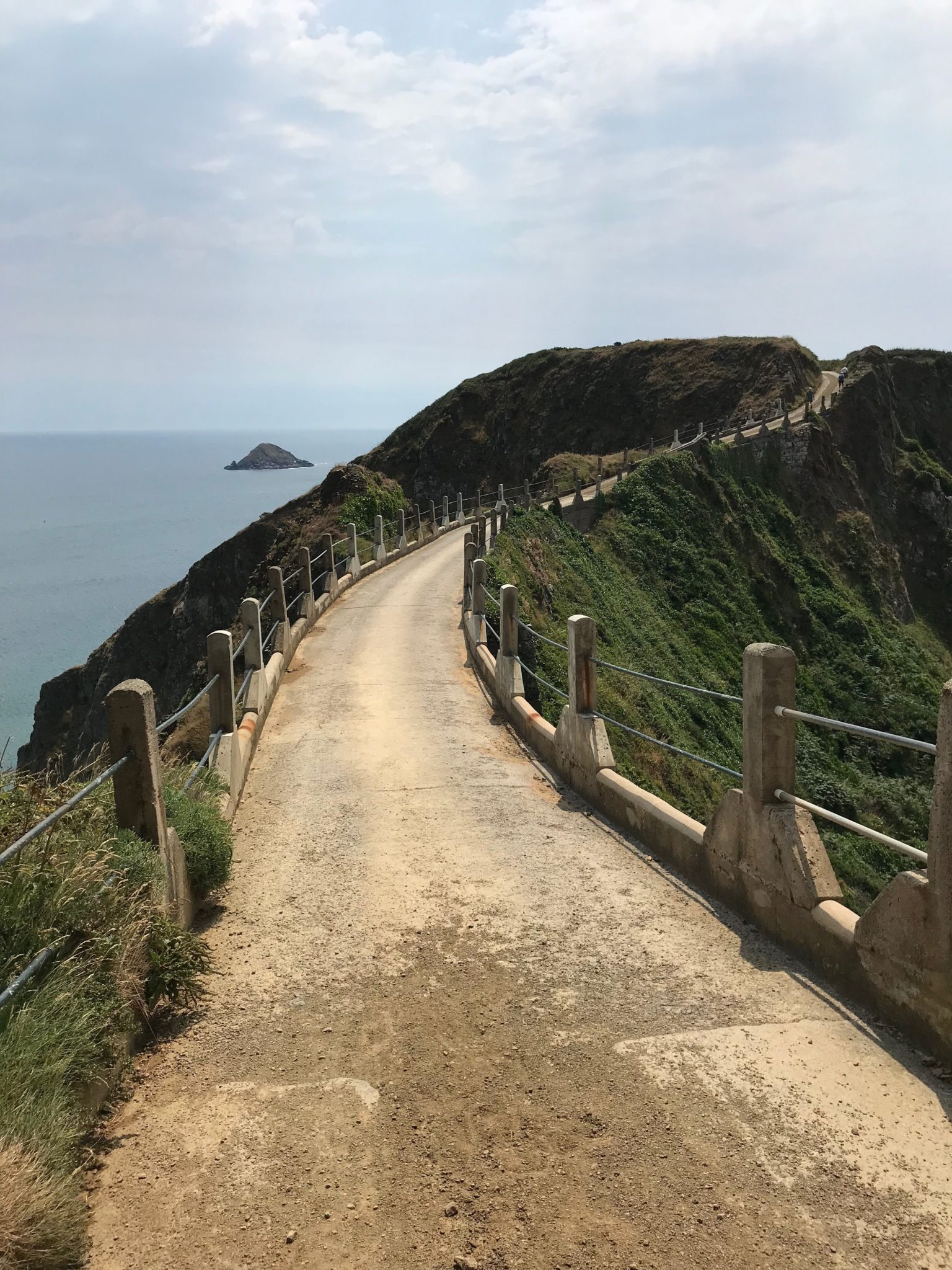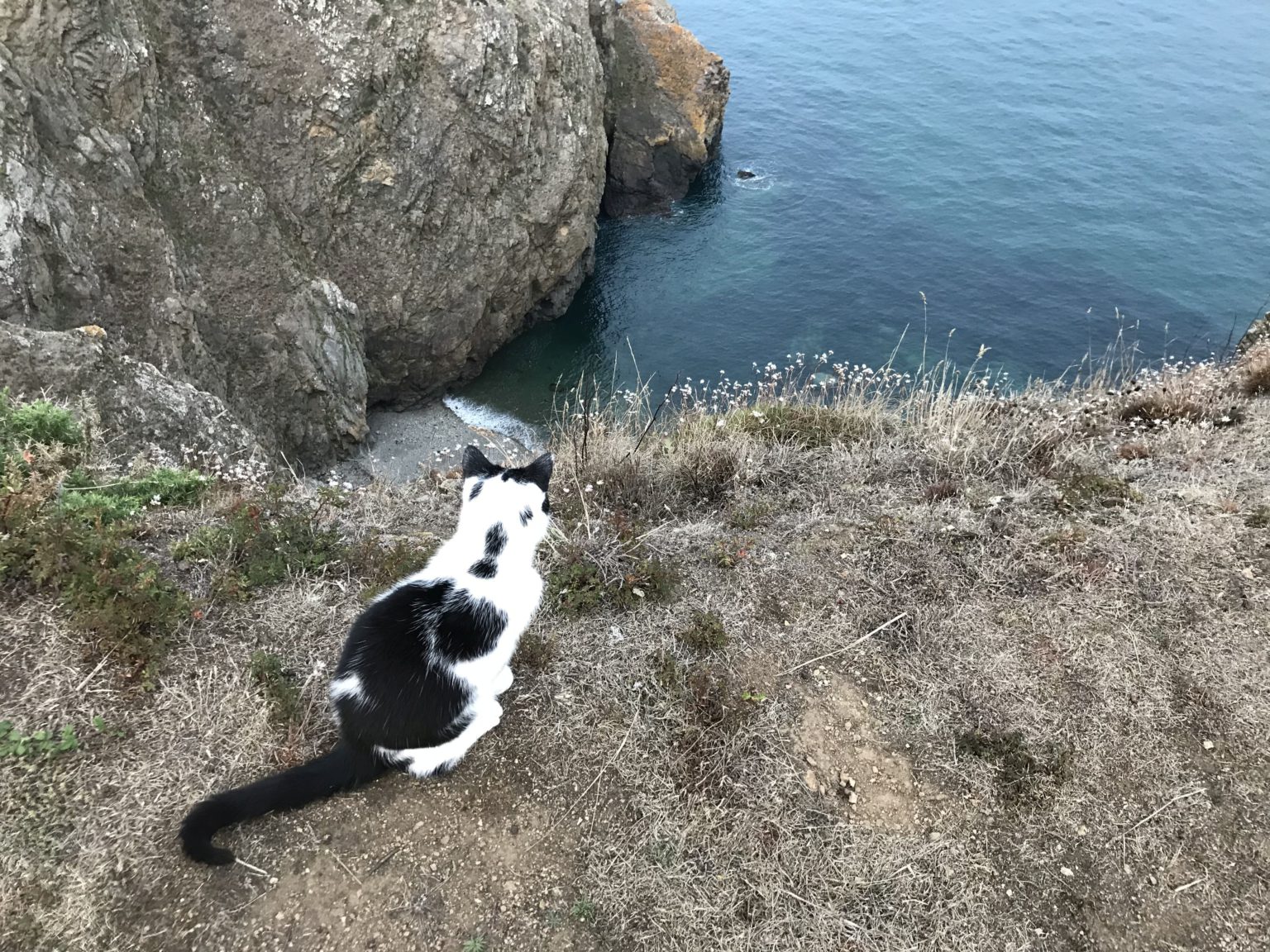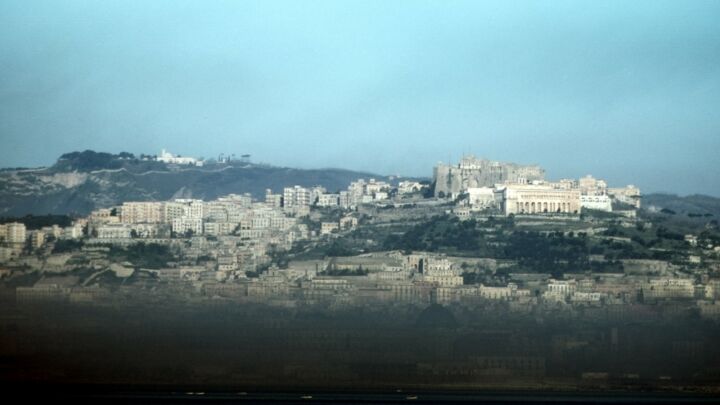
Long-read
Sark really is a world apart
A journey into the weirdest and most wonderful of the Channel Islands.
Want to read spiked ad-free? Become a spiked supporter.
I have come to Sark for the silence. I am so accustomed to the noise of traffic that it is quite thrilling to find myself in a place where cars are prohibited by law. There are cyclists, the occasional horse and cart, and every now and then a tractor. Waving to the drivers is futile, however. I’ve yet to see one smile.
That is not to say that the islanders are inhospitable – far from it – but the distinction between native and tourist is always immediately apparent. In one of the shops I meet an elderly brother and sister who still speak Sercquiais, an old Norman dialect descended from those who settled from Jersey in the 16th century. The patois sounds like French to the untrained ear, but the number of people who still speak it would barely reach double figures. ‘I tried it on a taxi driver when I was in Paris’, the brother tells me, ‘but he didn’t understand’.
I am not the sentimental type, but it is impossible not to find yourself romanticising the Sark experience. As you sail from nearby Guernsey it is not uncommon to be followed by a pod of dolphins, leaping eagerly by the ferry’s side. On a foggy day, the island emerges gradually as though conjured into existence, granite cliffs rising from a coastline pockmarked with caves. The powerful winds have twisted many of the trees into gnarled talons, clawing at the sky. It feels like fiction.
There are only around 500 residents, fewer still in winter when some decamp to Guernsey. With the exception of Jethou and Herm, it’s the smallest of the inhabited Channel Islands, a little over two square miles. It is also the highest, the perimeter consisting mostly of sharp drops rather than gradual slopes. At various points near the promontories you’ll find warning signs: ‘Danger ahead’, ‘Sheer drop’, ‘Gardez vos enfants’. The combination of the perilous terrain and the lack of any street lighting makes it surprising that fatalities are not more common.
For such a small island, there is plenty to see. There are the remains of the old silver mines near Port Gorey. There is the monument at the ‘Hog’s Back’ where allied soldiers landed during the Nazi occupation and successfully made away with a German prisoner. There is the ‘Window in the Rock’, a passageway through one of the cliffs that overlook Port du Moulin (created on a whim by the Reverend William Thomas Collings, the governing Seigneur of Sark from 1853 to 1882). On my map there is also a curious reference to ‘The Duck Pond’ which, on further investigation, turns out to be a pond with ducks. Never let it be said that the Sarkees aren’t plain speaking.

On arrival, most visitors take the ‘toast-rack’ (a tractor-drawn open bus) up the steep road from the harbour to La Collinette, the crossroads at the heart of the village. I opt for the alternative, a footpath which runs by a stream through the woods and bracken. It takes about 20 minutes, but I eventually arrive at ‘The Avenue’, the dusty road where most of Sark’s shops are located. I can’t help but notice that many are boarded up.
The reason is well known. The local economy has taken a hit in recent years due to the tension between the islanders and Sir David and Sir Frederick Barclay, the multi-millionaire identical twin brothers who have lived in their faux-gothic castle on the adjacent isle of Brecqhou since 1993. It is a long and complicated story, but, in short, the brothers were unhappy at Sark’s primogeniture laws that prevented them from leaving their £60million property to their four children. They pushed for reform, and the subsequent dispute led to the dismantling of the island’s feudal system and its first ever General Election in December 2008. When their preferred candidates didn’t succeed, the Barclay brothers withdrew their business interests. As a result, only two hotels on Sark remain open: Stocks and La Sablonnerie.
All of which explains why, when I mention the Barclays to the islanders, the conversation tends to draw to a close. The Seigneur still holds a hereditary seat in the Chief Pleas (Sark’s parliament), but the feudal system which was in place since 1565 came to an end with the Barclays’ intervention. One Sarkee tells me that they were far better off before they had democracy.
My first task is to hire a bicycle. You can cycle from one end of the island to the other in less than half an hour. A bike lock is advised, but crime isn’t much of a worry here. When I check in to my guest house I am surprised not to be given a key. Surely, I ask the proprietor, the house should be locked at night? ‘We don’t need to’, she replies. ‘This is Sark.’
There is a working prison, the smallest in the world, a windowless stone construction from the mid-nineteenth century which can hold two prisoners at any one time. There are two unpaid policemen – the Constable and the Vingtenier (his assistant) – more than enough to keep would-be criminals in check.

The last major crime took place in 1990, when a French physicist called Andre Gardes attempted a one-man invasion of the island. He rowed to Sark, armed with an automatic weapon and dressed in army fatigues, and posted signs announcing that he was the rightful heir to the Seigneurship. The Nazis had occupied Sark for five years during the war, but Gardes’ attempt was foiled on the first day after a swift punch to the face from the local constable.
On a particularly clement morning I take a walk to La Seigneurie, the traditional home of the Seigneur, open to the public since last year. I had previously seen a photograph of the building from the Second World War in the autobiography of Sybil Hathaway, the ‘Dame of Sark’ from 1927 to 1974. The war had caused severe food shortages, and in the picture an attenuated Hathaway, weighing little over seven stone, can be seen addressing a group of German soldiers in the courtyard. Her account of this period makes for fascinating reading; it is just a shame her book, The Dame of Sark, isn’t better known.
As the Dame (the title of Seigneur is reserved for men), Hathaway was entitled to all the traditional privileges, such as being the only islander permitted to keep a pet bitch or to breed pigeons. Sark law dictates that any rogue pigeons that land on the island are to be murdered forthwith. This isn’t even the oddest of the local laws. According to Hathaway, all tenants were required to ‘pay a feudal due in capons on their kitchen chimneys’.
On the subject of chimneys, many of those on the older houses have conspicuous ledges, which were apparently constructed for the benefit of passing witches who might need a rest. Somehow the reality seems thinner on Sark, so it would feel unnatural if it were not steeped in folklore. It is said that the island was once occupied by a Lilliputian race called the ‘pouquelayes’, mischievous pixies with detachable heads (the last sighting was by a fisherman in the early 20th century, so we can assume they have since died out). There is a prevailing legend that on the stroke of midnight on St John’s Eve, all the cattle will kneel and be temporarily empowered with human speech. I’m tempted to verify this for myself, just to find out what they say.

There is an undeniable oddness to Sark, which is one of the reasons I am so fond of it. Although occupied by the Romans, and later by French monks, for long periods of time it remained uninhabited and was used as a sanctuary for pirates. In his Fourth Book of Pantagruel (1552), François Rabelais described Sark as a denizen of thieves, bandits and cannibals. ‘Do not go among ’em,’ he writes, ‘it were safer to take a journey to Hell’. Hathaway, too, alludes to its turbulent history: ‘Many people have told me that in certain parts of the island they have a strange feeling that dreadful deeds have taken place.’
I can well believe it. The sense of danger is integral to Sark’s unique beauty. The novelist and illustrator Mervyn Peake wrote Gormenghast (1950) while living here, and the baleful atmosphere he created was doubtless inspired by his environs. His lasting tribute to Sark is his novel Mr Pye (1953), a supernatural story about an eccentric evangelist who settles on the island. The tone is much lighter than his other novels, and so it seems fitting that his illustrations for Mr Pye are sparse in style, a deviation from the intricate dark whorls and crosshatching for which he was well known. When a Channel 4 film crew arrived to adapt the book for television, they were dismayed to learn that Sark law prohibited them from driving their car for the purpose of tracking shots. Their solution was to disconnect the engine and have the car towed by a tractor.

The extent of the island’s influence on Peake is made explicit in Gormenghast, in which ‘Little Sark’ is mentioned by the character of the Countess. The real-life Little Sark is connected to the main body of the island by a narrow isthmus known as La Coupée, three metres wide with a 250-foot sheer drop on either side. Before the first railings were constructed in 1900, children from Little Sark would crawl on their hands and knees when journeying to school to prevent them from being swept off in the strong winds. ‘Did you not have to crawl across the Coupée – the high knife-edge?’, the Countess of Gormenghast asks of her son Titus. ‘How else could you have returned?’
It’s safe enough now, of course. There hasn’t been a fatality on La Coupée for over 200 years, and that was only because a man carrying sheaves of corn got caught in a sudden gale. It goes without saying that there is a longstanding tradition that La Coupée is haunted. I’ve heard stories of headless horsemen, levitating coffins and a spectral black hound called the ‘Tchico’.
There’s a promontory on the Little Sark side of La Coupée where I often go to read. It overlooks the vertiginous drop to Convanche Bay, the location of La Caverne des Lamentes, the acoustics of which are said to produce the shrieking sounds that have led so many to conclude that the area is alive with spirits. I’ve certainly never seen a ghostly hound, although there is a very affectionate black and white cat who I’ve encountered on this spot on multiple occasions. It seems real enough.

That is not to deny the dangers of exploring certain areas of the island, particularly if you travel alone. The La Trobe Guide, the best handbook for those intrepid enough to seek out the most interesting caves and coastal walks, opens with the reassuring sentence: ‘Every activity in life carries risk.’
The author is right to advise caution. Many of the labyrinthine cave networks are only accessible at low tide, and poor timekeepers are likely to find themselves cut off. It’s worth the risk, though. As Hathaway notes of the Gouliot caves, ‘their walls glow with millions of rainbow-coloured sea-anemones interspersed with almost transparent zoophytes, each of which holds a drop of water so that the whole effect is iridescent’.
A friend and I decide to spend an evening at Port du Moulin, exploring the coastline and the caves before attempting to find our way back to the pathway up the cliffside. We have one torch between us, no more powerful than a bicycle light, and in spite of our copy of La Trobe we inevitably get lost. After an hour of scrambling over boulders, we realise that the water has risen above our most likely escape route, and soon the entire bay will be submerged. There’s a very good reason why the Sark hoteliers provide guests with detailed tidal information.
In the now pitch darkness, the incoming sea lapping against the rocks sounds like a ravenous predator licking its lips in anticipation. With no mobile-phone coverage, we have little choice but to accept our fate. Perhaps it’s the magical intervention of the pouquelayes, but in one rocky recess my phone suddenly finds the barest signal, sufficient at least to call for assistance. Before long a local couple have found us and are able to guide us back to higher ground. I still consider our survival to be little short of miraculous, but then I do have a tendency to over-dramatise.
This small humiliation aside, I’m looking forward to returning to Sark. I make the most of my last day, taking a late walk to look at the stars. Sark was the inspiration for Enya’s 2015 album Dark Sky Island; the lack of street lighting means that the skies at night here offer among the clearest views in the world for the would-be astronomer.
I don’t sleep that night, and later head off to the viewing point at Les Laches to watch the sun rise. There is an undeniable glee in pelting it down the road on a bicycle, half-delirious from fatigue, when there is nobody about to see quite how childishly you are behaving. By the time I get to Les Laches the sun is already breaking through the clouds between the coast of Normandy and Jersey. The Normans appear to be waking up.
For a while all I can hear is a combination of the birdsong, chirruping insects and the water breaking against the walls below at Creux Harbour, but by six o’clock the cockerels are making their usual racket. I am to catch the early ferry, so I wander down to the harbour and wait.
As I’m sitting there, too tired to read, I’m reminded of another anecdote from Hathaway’s autobiography. It was at this location where, in 1859, the islanders gathered to greet Queen Victoria, who was expected to stop off at Sark on her way to Jersey. They had prepared a lavish banquet, and the quay was decorated with flowers, flags and a red carpet. But the queen and her entourage simply sailed by. To make matters worse, by the time they got back to the Seigneurie the dining room where the banquet was to be held had been trashed by peacocks.
A strange story perhaps, but not by Sark’s standards.
Andrew Doyle is a stand-up comedian and spiked columnist.
Picture: Wikimedia Commons
All in-article pictures by: Andrew Doyle
No paywall. No subscriptions
spiked is free for all
Donate today to keep us fighting
Celebrate 25 years of spiked!
A media ecosystem dominated by a handful of billionaire owners, bad actors spreading disinformation online and the rich and powerful trying to stop us publishing stories. But we have you on our side. help to fund our journalism and those who choose All-access digital enjoy exclusive extras:
- Unlimited articles in our app and ad-free reading on all devices
- Exclusive newsletter and far fewer asks for support
- Full access to the Guardian Feast app
If you can, please support us on a monthly basis and make a big impact in support of open, independent journalism. Thank you.







Comments
Want to join the conversation?
Only spiked supporters and patrons, who donate regularly to us, can comment on our articles.